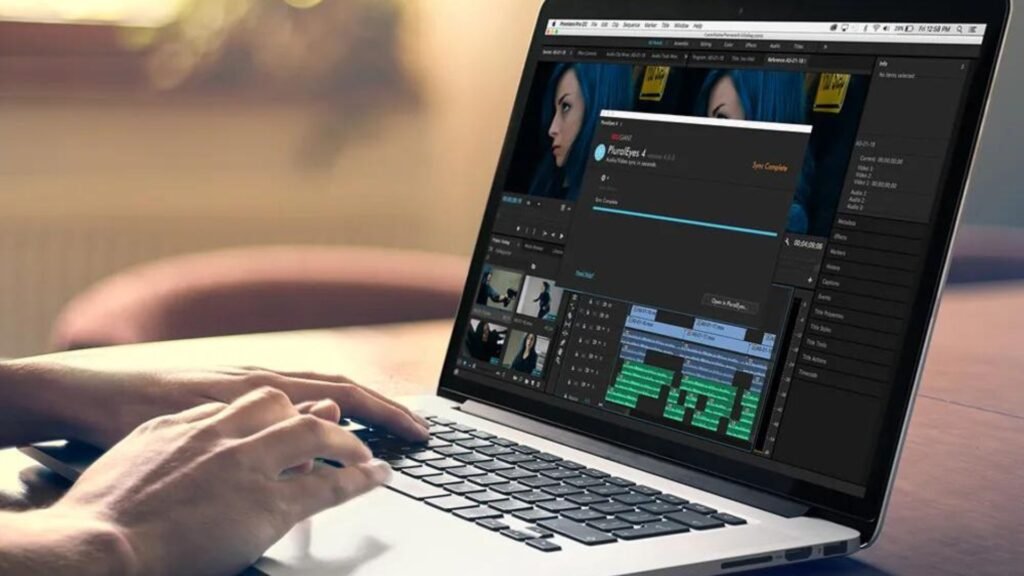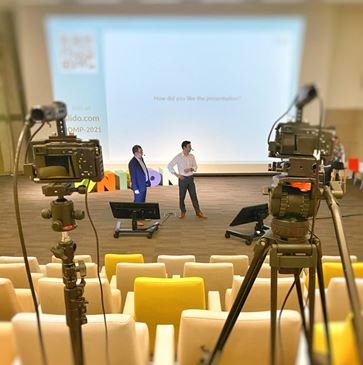Syncing audio and video in multimedia projects can be a challenging task, but it’s crucial for creating smooth and professional-looking results. Whether you’re working on a film, presentation, or online content, perfect synchronization enhances the overall quality of the project. In this article, we’ll share several tips for syncing audio and video in multimedia projects, ensuring your content feels polished and well-coordinated.
Why Syncing Audio and Video is Essential
The first thing to note is the importance of syncing audio and video in multimedia projects. When audio and video are not aligned, it can distract the audience and take away from the content’s effectiveness. For instance, if a speaker’s voice doesn’t match their lip movements, it immediately lowers the viewer’s engagement. On the other hand, well-synced audio and video create a seamless viewing experience, making the project feel professional.

Use a Clap or Slate for Easy Syncing
One of the simplest and most effective ways to sync audio and video in multimedia projects is by using a clap or slate. If you’re recording separate audio and video, clap your hands or use a slate before starting the recording. This creates a sharp sound and visual spike, making it easy to align the audio and video tracks during editing. By matching the sound of the clap with the visual cue, you ensure that both tracks are perfectly in sync.
Work with Timecodes
Timecodes can also help you achieve accurate syncing. Many professional cameras and audio recorders have built-in timecodes that mark the exact frame and second of each recording. When both your audio and video devices are set to the same timecode, syncing becomes much easier. You just have to line up the timecodes in your editing software, and the audio and video should match perfectly.
Use Audio Waveforms for Precision
Another great technique for syncing audio and video in multimedia projects is by using audio waveforms. In your editing software, look for the waveform of both the camera’s in-built audio and your external audio recording. By matching the waveforms, you can ensure that the audio lines up correctly with the video. This technique is especially useful when you don’t have a clap or slate to work with.
Sync in Post-Production Software
Many modern editing tools, such as Adobe Premiere Pro and Final Cut Pro, offer automatic audio sync features. You can import both your video and audio tracks, select them, and let the software sync them automatically. This feature saves time and ensures accuracy, especially when working on large projects where manual syncing would be too time-consuming. While it’s always good to check the results, this option is generally reliable.
Keep Frame Rates Consistent
One common mistake that can cause syncing issues is using different frame rates for your audio and video recordings. Always ensure that the frame rate of your camera matches the settings of your audio recording device. Inconsistent frame rates can cause a gradual drift between the audio and video, making syncing extremely difficult. Set all your devices to the same frame rate at the beginning of the project to avoid this problem.
Watch Out for Audio Drift
Speaking of audio drift, it’s important to monitor this during the editing process. Audio drift occurs when the audio gradually becomes out of sync with the video over time, usually due to slight discrepancies in recording devices or settings. To prevent this, use high-quality equipment that records at stable and consistent settings. If you notice drift, you may need to make adjustments in your editing software by either stretching or compressing the audio track slightly to match the video.
Monitor Audio Quality
Good syncing also depends on the quality of the audio you’re working with. Always make sure that your audio recordings are clear and free of background noise. Poor-quality audio can make syncing more difficult because it’s harder to identify key points for alignment. Use good microphones and proper soundproofing techniques when recording to ensure you have high-quality audio to sync with your video.
Double-Check Sync Before Exporting
Before exporting your final multimedia project, always double-check the sync between your audio and video. Play the project back multiple times and pay attention to any sections where the sync may feel slightly off. Even minor issues can disrupt the flow of your project, so it’s important to get everything as close to perfect as possible. This final check ensures that the audience has the best possible viewing experience.
Test with Short Clips First
If you’re new to syncing audio and video in multimedia projects, practice with short clips before working on a full-length project. Testing the syncing process with a small portion of your footage allows you to troubleshoot any potential issues before committing to the entire project. Once you’ve mastered syncing on a smaller scale, you’ll feel more confident applying these techniques to longer, more complex projects.
Conclusion
In multimedia projects, syncing audio and video is crucial for creating a professional and polished final product. Whether you’re using a clap, timecodes, or automatic syncing software, these tips will help you achieve perfect alignment. Remember to check for audio drift, use consistent frame rates, and monitor the quality of your audio to ensure everything runs smoothly. By following these strategies, you can enhance the quality of your multimedia projects and deliver a seamless experience for your audience.











